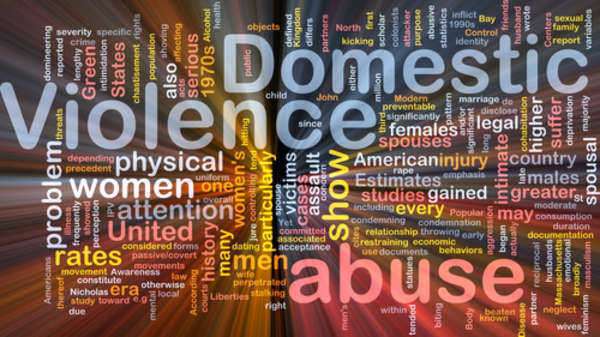
Battered Woman’s Syndrome (BWS) – Meaning
Battered woman syndrome (BWS) refers to the physical and psychological harm that is caused to women who are subjected to domestic abuse. Battered women often suffer from repeated cycles of violence, characterized by physical, sexual, and emotional abuse by their partners. Battered woman syndrome is recognized by the legal system as a psychological condition that can impact the ability of women to form the necessary mens rea to be convicted of certain crimes, such as homicide. As such, BWS has been increasingly used as a defense strategy in criminal trials, raising important questions about legal accountability and the role of gender in the justice system. This essay explores the relevance of BWS in court through a review of legal cases and scholarly literature.
Defining battered woman syndrome
Battered woman syndrome is a term that has evolved over time and has been used to describe the psychological and physical harm that women who are subjected to domestic abuse experience. It is not officially recognized as a mental disorder by the American Psychiatric Association, but is widely recognized as a condition that can arise from prolonged exposure to domestic violence. Newer terms, such as post-traumatic stress disorder (PTSD), have been used to describe the symptoms experienced by battered women, but BWS has remained a useful shorthand for discussing the phenomenon as a whole (Campbell, Abboud, & Raja, 2013).
The key characteristics of battered woman syndrome are a sense of helplessness and dependency on the abuser. As a result of these characteristics, battered women often suffer from a lack of self-esteem and are unable to leave the abusive relationship. BWS is a response to the cognitive dissonance experienced by some women who are unable to reconcile the violence in their intimate relationships with their own feelings of love and attachment to their partners (Brouwer & MacIntyre, 2017). This dynamic can make it all the more difficult for battered women to seek help or escape their relationships.
Legal relevance of battered woman syndrome
The recognition of battered woman syndrome has been significant in legal circles, highlighting the complex dynamics of domestic violence and its impact on women’s legal culpability. BWS has been recognized as a legal defense strategy in some jurisdictions, allowing defendants who claim to suffer from the syndrome to have their charges reduced or dismissed entirely.
A seminal case in the recognition of BWS as a defense strategy was State v. Kelly in 1984, in which the Supreme Court of New Jersey held that expert testimony on BWS was admissible evidence in cases of homicidal self-defense (UTEAP Project, 2012). The court held that the severe physical violence and threats experienced by the defendant over a sustained period contributed to her fear of her partner and ultimately compelled her to use lethal force in self-defense. Expert testimony on BWS was critical in this decision, with the court recognizing the need for courts to consider the unique perspective of battered women in their legal decision-making.
Since the Kelly decision, BWS has been increasingly used as a defense strategy in criminal trials, particularly in cases of spousal homicide. Defendants claiming BWS argue that the prolonged abuse they experienced at the hands of their partners caused them to act in self-defense, or that their actions were a result of the psychological trauma they experienced as a result of the abuse (Creighton & Kretzmer, 2014).
The use of BWS as a defense strategy has raised important legal and ethical questions. Critics argue that the strategy is often used cynically, allowing violent defendants to avoid punishment for their crimes. There are also concerns that the use of BWS reinforces the stereotype of battered women as helpless and reinforces gender-based attitudes about women’s responsibility for their own victimhood (Grossman & Wordsworth, 2014).
However, defenders of the BWS defense argue that the recognition of the syndrome highlights the systemic issue of domestic violence in society and encourages judges and juries to consider the complex psychological and physical challenges faced by battered women. In fact, research suggests that BWS defense strategies do not lead to significantly reduced sentences, but rather to more nuanced judgments that recognize the unique circumstances of battered women in the justice system (Creighton & Kretzmer, 2014).
Legal standards for BWS
Despite the increasing recognition of BWS in legal circles, the standard for admissibility of expert testimony on BWS remains a contentious issue. In the United States, the standard for admissibility has largely been defined by the decisions in Daubert v. Merrell Dow Pharmaceuticals, Inc. and Kumho Tire Co. v. Carmichael, which set out the criteria for admitting expert testimony in federal courts (UTEAP Project, 2012).
These criteria require that expert testimony on BWS be based on reliable scientific methods, that the testimony be relevant to the case, and that the testimony not be introduced for the purpose of misleading or confusing the court or jury. Additionally, the analysis must be specific to the individual defendant, as each person’s experience with domestic violence is unique.
The application of these criteria to BWS has been problematic, with some courts finding that BWS does not meet the criteria for scientific reliability, or that the expert testimony is not directly relevant to the defendant’s case (UTEAP Project, 2012). However, other courts have taken a more liberal approach to the admissibility of BWS testimony, recognizing its importance in understanding the psychological and physical trauma suffered by battered women.
In Canada, the standard for admissibility of BWS testimony was set out in R. v. Lavallee in 1990. In this case, the Supreme Court of Canada established a two-part test for the admissibility of BWS evidence. The first part of the test requires that the evidence be relevant to an important issue at trial, such as the accused person’s state of mind at the time the alleged crime was committed. The second part of the test requires that the evidence be necessary to enable the trier of fact to understand the evidence fully (UTEAP Project, 2012).
Lavallee approach to BWS has been widely accepted in Canadian courts, and has provided a useful framework for accommodating the unique perspectives of battered women in the justice system. The Canadian model acknowledges the complexity of domestic abuse and its impact on women’s legal accountability, recognizing that men and women may experience violent situations differently.
Challenges to BWS defense strategies
Despite its acceptance in some jurisdictions, the use of BWS as a defense strategy has not been without challenges. In particular, there have been concerns about the potential for confusion in the minds of jurors, who may struggle to understand the complexities of BWS and its relevance to the defendant’s case (Grossman & Wordsworth, 2014).
There have also been concerns that the use of BWS defense strategies reinforces gender-based stereotypes and victim-blaming attitudes. Critics argue that the use of BWS as a defense effectively turns attention away from the perpetrators of domestic violence and places the focus on the mental health of victims. This approach is problematic, as it suggests that battered women are responsible for their own victimhood (Creighton & Kretzmer, 2014).
Another challenge for BWS defense strategies is the question of causation. In order for BWS to be successfully used as a defense, it must be established that the abusive relationship was the direct cause of the defendant’s actions. This can be difficult to prove, as the actions of the defendant may be the result of a combination of factors, including factors unrelated to domestic violence (Grossman & Wordsworth, 2014).
Additionally, there have been concerns about the potential for abuse of the BWS defense strategy by women who have not experienced domestic violence. In some cases, women have falsely claimed histories of domestic abuse in order to avoid legal consequences for crimes they have committed. This has raised ethical concerns about the use of BWS as a legitimate defense strategy in court (Creighton & Kretzmer, 2014).
Conclusion
Battered woman syndrome is a complex psychological and physical condition that has significant legal relevance in cases of spousal homicide. The recognition of BWS as a defense strategy has raised important questions about legal accountability and the role of gender in the justice system. The standard for admissibility of expert testimony on BWS remains controversial, with some courts finding that the evidence is not scientifically reliable or relevant to the defendant’s case.
Despite its challenges, the use of BWS as a defense strategy has been beneficial in encouraging a more nuanced understanding of the psychological and physical challenges faced by battered women in the justice system. It has highlighted the systemic issue of domestic violence and has encouraged judges and juries to consider the unique circumstances of battered women when making legal decisions.
As such, BWS remains an important area of study for legal scholars and mental health professionals alike. Understanding the dynamics of domestic violence and its impact on women’s legal accountability can help to improve the justice system and promote greater gender equality in society.
The Four Stages of Battered Woman’s Syndrome: Understanding the Trauma
Introduction
Battered Woman’s Syndrome is a complex psychological condition that affects women who have experienced long-term domestic violence. This syndrome, first introduced by psychologist Lenore Walker in the 1970s, sheds light on the profound emotional and psychological impact of abuse. Understanding the four stages of Battered Woman’s Syndrome is crucial for both victims and those seeking to support them. This article explores these stages in-depth, shedding light on the harrowing journey survivors go through and the importance of empathy, intervention, and support.
Stage 1: Denial
The first stage of Battered Woman’s Syndrome is denial. In this stage, the victim often minimizes or denies the severity of the abuse. This denial is a psychological defense mechanism that helps the survivor cope with the overwhelming trauma they are experiencing. Here are some key characteristics of the denial stage:
1. Rationalization: Victims often make excuses for their abuser’s behavior, blaming themselves or external circumstances. They may believe that their partner’s actions are justifiable or that the abuse will stop if they change something about themselves.
2. Isolation: Abusers frequently isolate their victims from friends and family, making it difficult for them to seek help or validation outside the abusive relationship. This isolation reinforces the victim’s belief that they are alone and helpless.
3. Hope for Change: Many survivors hold onto the hope that their abuser will change or that the abuse is temporary. This hope can be a powerful motivator for staying in the relationship.
4. Shame and Guilt: Victims often feel ashamed of their situation and guilty for not being able to stop the abuse. These feelings further contribute to their denial.
It is crucial for friends, family, and professionals to approach individuals in the denial stage with empathy and understanding. Judging or pressuring the victim to leave the relationship can be counterproductive. Instead, offer support and resources to help them recognize the abuse and consider their options.
Stage 2: Guilt and Shame
As the abuse continues, victims often progress to the second stage of Battered Woman’s Syndrome, characterized by overwhelming feelings of guilt and shame. This stage is deeply rooted in the psychological manipulation and gaslighting tactics employed by abusers. Key features of the guilt and shame stage include:
1. Self-Blame: Victims internalize the blame for the abuse, convinced that they deserve the mistreatment. They may believe they are not good enough, attractive enough, or worthy of love.
2. Loss of Self-Esteem: Over time, the constant criticism and emotional abuse erode the victim’s self-esteem. They may feel worthless and powerless.
3. Fear of Disclosure: Victims often hide the abuse from others due to the fear of judgment or disbelief. They may be afraid that no one will believe their story, further intensifying their shame.
4. Emotional Isolation: Victims in this stage may withdraw from social connections, further isolating themselves from friends and family who could provide support.
Breaking through the guilt and shame stage is challenging but essential for healing. It requires a supportive network and access to resources such as therapy and counseling. Encouraging victims to seek professional help can be a crucial step in their recovery.
Stage 3: Enlightenment
The third stage of Battered Woman’s Syndrome is marked by enlightenment or a growing awareness of the abusive nature of the relationship. Victims in this stage begin to see the patterns of abuse and may reach out for help. Key characteristics of the enlightenment stage include:
1. Recognizing the Abuse: Victims start to acknowledge that they are in an abusive relationship. They understand that the abuse is not their fault and that their partner’s behavior is controlling and unacceptable.
2. Seeking Support: Individuals in this stage may confide in friends, family members, or professionals about their situation. This step is pivotal in breaking the isolation they felt in previous stages.
3. Planning for Change: Victims in the enlightenment stage often start to plan for a life beyond the abusive relationship. They may explore legal options, seek therapy, or access community resources.
4. Emotional Rollercoaster: Despite their growing awareness, victims may still experience intense emotional turmoil, including fear, anxiety, anger, and sadness.
Support from loved ones and professionals is crucial during the enlightenment stage. Encouraging victims to create a safety plan and connect with domestic violence organizations can help them take steps towards leaving the abusive relationship.
Stage 4: Taking Action
The fourth and final stage of Battered Woman’s Syndrome is characterized by taking decisive action to break free from the abusive relationship. This stage can be the most dangerous, as abusers often escalate their control and violence when they sense their victim is trying to leave. Key features of the taking action stage include:
1. Leaving the Relationship: Victims may choose to leave the abuser, either temporarily or permanently. This step often involves seeking shelter, legal protection, and support from domestic violence organizations.
2. Legal Action: In some cases, victims pursue legal action, such as obtaining restraining orders or pressing charges against their abuser.
3. Rebuilding: After leaving the abusive relationship, survivors begin the process of rebuilding their lives. This can involve finding safe housing, regaining financial independence, and healing from the emotional trauma.
4. Continued Support: Ongoing support from friends, family, therapists, and support groups is vital during this stage. The transition to a life free from abuse can be challenging, and survivors need a strong support system.
Conclusion
Understanding the four stages of Battered Woman’s Syndrome is crucial for supporting survivors and helping them break free from abusive relationships. It is essential to approach victims with empathy, validation, and resources rather than judgment or pressure. With the right support and interventions, survivors can move through these stages towards healing, empowerment, and a life free from abuse. Ending the cycle of violence requires a collective effort from society, including increased awareness, improved access to resources, and changes in attitudes toward domestic violence.
Battered woman’s syndrome is an extremely detrimental psychological condition that effects women who are subjected to repeated abuse and violence. This syndrome helps to explain why women stay in abusive relationships and do not seek assistance for their harmful situation. There a various stages that an individual who is suffering from this condition will experience. When an individual begins to experience domestic violence, they will often deny the abuse that they are suffering from. They will refuse to admit that anything is wrong.
Once a victim accepts the fact that abuse is occurring, they will experience guilt and shame. Victims will often believe that the abuse is their fault and not the fault of the offender. Eventually, a victim of domestic violence will realize that they are not to blame for the brutality that they are being subjected to. Despite the realization that their partner is victimizing them, the individual will choose to remain in the abusive relationship. It may take some time, but sooner or later the victim will understand that in order to protect themselves and their family they must escape their harmful relationship. These stages can be observed in many of the victims of domestic violence and abuse.
Denial
The first stage of battered women’s syndrome is denial. Denial occurs when a victim of abuse is unable to admit and acknowledge that they are being subjected to domestic violence. During this stage, a victim of intimate partner abuse will not only avoid admitting the abuse to their friends and their family members, but they themselves will not acknowledge the brutality that they are suffering from. They will fail to recognize that there are any problems between themselves and their partner. There are multiple factors that may contribute to a victim’s unwavering denial.
In many instances, an individual does not realize that they are being subjected to domestic violence. This is largely due to the manipulative and coercive behavior of their abuser. The acts of abuse may be so covert that they do not appear to be harmful or detrimental. In other instances, a victim of domestic violence may believe that denial is the most effective way to avoid being subjected to further violence and brutality. Whatever the cause, denial is extremely adverse. Until a victim admits and confronts the abuse that they are experiencing, they will not be able to provide themselves with the help and the protection that they need.
Guilt
After an individual experiences the denial phase they will move on the the guilt stage. During this phase of the battered women’s syndrome, victims of domestic violence will experience feelings of extreme guilt and disgrace. They will believe that they have caused the abuse that the perpetrator has subjected them to. In many cases, the offender will convince their victim that they are forced to resort to physical violence in order to punish the victim for their negative characteristics. They may use brutality to teach their victim not to take part in behaviors that they disapprove of.
Individuals who subject their partner to abuse will often defame and put down their victim in order to establish control. As a result, the victim will experience low self esteem and depression. Once this occurs, it is not difficult to convince an individual that they are being subjected to abuse due to their own faults and shortcomings. If they were better at certain tasks and if they lived up to the expectations of their partner, then they would not be experiencing domestic violence and abuse. Victims of intimate partner abuse will believe this. Therefore, they will not report the abuse that they are experiencing because their partner is not to blame for the cruelty.
Enlightenment
One of the most important phases of the battered women’s syndrome is enlightenment. This occurs when a victim of abuse recognizes that they are not to blame for the abuse that they are experiencing. They will begin to understand that no one deserves to be subjected to domestic violence no matter what characteristics they posses. The fact that an offender does not approve of their victim’s behavior does not justify subjecting the victim to abuse and violence.
During this stage, a victim will begin to acknowledge that their partner has an abusive and violent personality, and that the domestic violence that the victim is experiencing is the fault of the abuser. It is now that a victim may begin to realize the importance of seeking domestic violence help. Despite the realization that they are living in an unhealthy environment and with a dangerous individuals, victims will continue to remain with their abuser. They will commit themselves to saving their marriage. They will often use various different reasons in order to justify this decision. However, individuals who choose to remain in their detrimental environment will soon find that in most cases, the abuse will not get better, it will increase in severity.
Responsibility
Once a victim of abuse recognizes that the domestic violence they are suffering from is the fault of their abuser, it is only a matter of time before these victims understand the importance of escaping their current environment. In the majority of cases, domestic violence does not improve over time. Most individuals who subject their partners to violence and brutality are repeat offenders and they will continue to expose their victim to intimate partner abuse. When an individual acknowledges this, they will understand that their safety, and the safety of their children, depends on leaving their abusive relationship. During the responsibility stage of the battered women’s syndrome, an victim of domestic violence may experience a vast array of difficulties.
It is essential that individuals who have decided to escape their detrimental situation ensure that they are safe and secure. Women are in the most danger when they make the decision to flee their current environment. Therefore, it is essential that an individual plan their escape well. If a victim would like support and advice about leaving an abusive relationship then they can contact a law enforcement agency or an abuse hotline. Domestic violence shelters may also be able to provide victims with information and support.
















